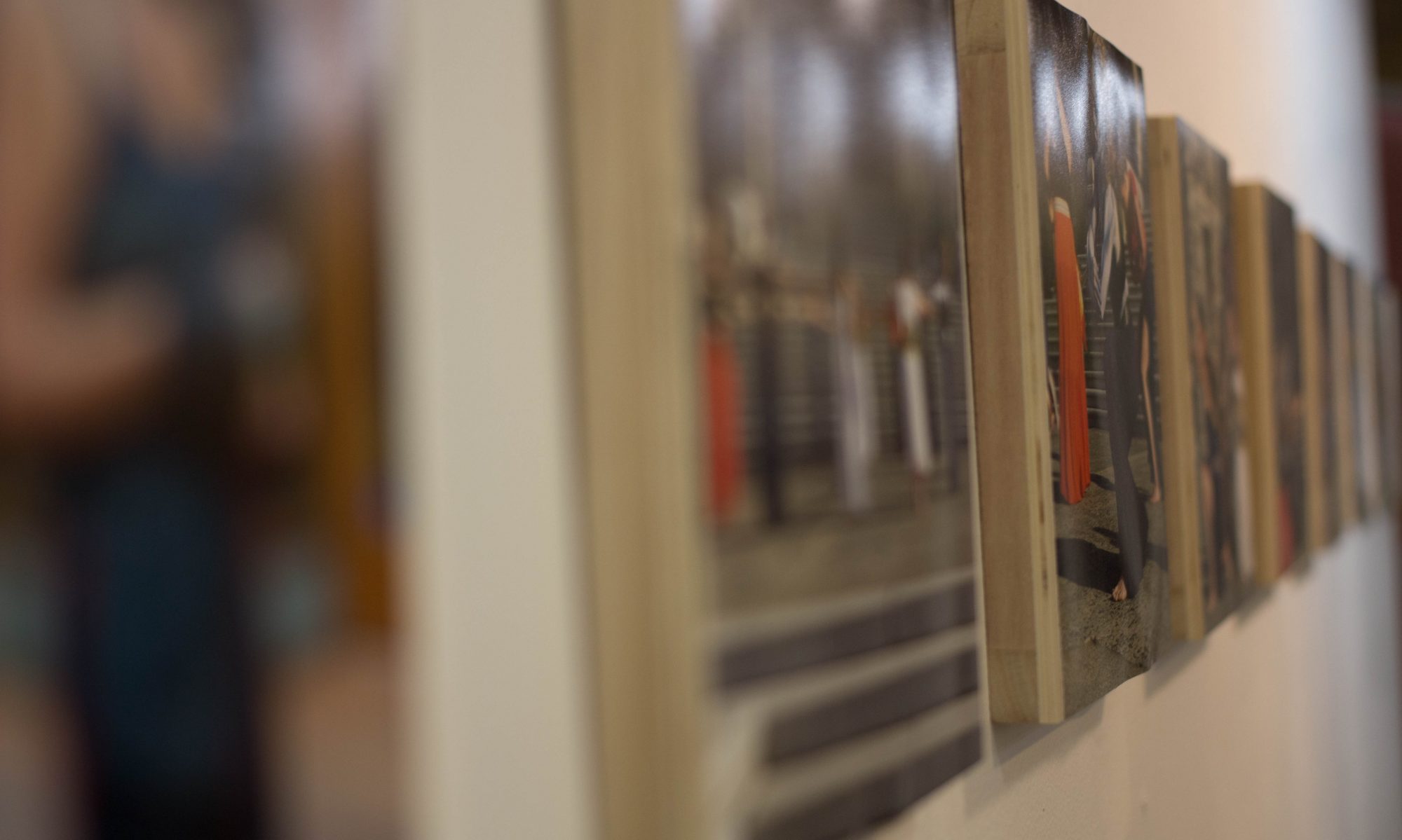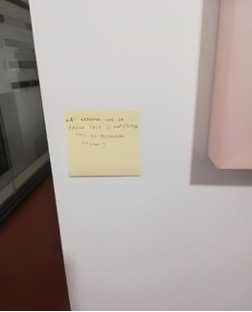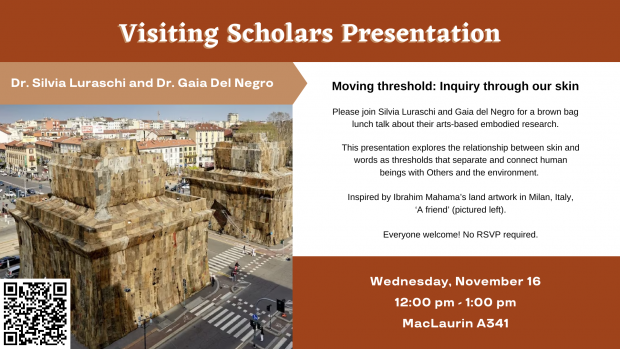This five-year international collaborative feminist study and activist project will bring together, for the first time, women’s, gender and feminist museum, library and heritage site curators, educators and practitioners with feminist adult educators and researchers working in communities and universities. Together, we will explore how our two similar yet distinct groups are conceptualising and operationalising the feminist imaginary as a critical feminist pedagogical contribution to a decolonised gender-just world. Our study is conceptualised using broad understandings and intersectional lenses of gender, women, and sexuality and the impacts heteropatriarchal colonial practices of exclusion, oppression, and misrepresentation have on these populations.
Bates (2019) argues that despite general beliefs that gender equality has been reached, a 2019 study by the United Nations recognises this form of inequality as an “unfinished business in every single country of the world” (p. 1). The Generation Equality Forum (2021) report takes it further, describing this form of discrimination as not only the most enduring but the most “defining inequality of our time” (n/p). Worldwide, “the powers that be are still predominantly male…the millennia old status hierarchy between men/male and women/female persists everywhere and patriarchal patterns of gender oppression remain more resilient than any of us suspected” (Vintges, 2018, p. 165). In 2011 Wigginsargued that gender inequality “was likely to get worse” (p. 3) and Shameen’s 2021 study shows how. She illuminates a disturbing “global patriarchal backlash [of] rising fundamentalist and fascist agendas” (p. 2). “Forces of extremism, cultural imperialism, ideological colonization…and the (re)imposition of patriarchal heteronormative family values…are shaping the parameters of public discourse and consciousness” (p. 10). Through policy, rights are curbed; through the power of social media, messages of misogyny, intolerance and ‘white’ masculine supremacy invade the homes and lives of millions across the globe (p. 10). In response to feminist “loud acts of refusal and rebellion and quiet acts of resilience” (Ahmed, 2017, p. 3) is a reinvigorated vilification of “feminism as the primary threat to public morality” and calls “to protect family values” (Shameen, 2021, p. 10). While deeply problematic, disparagements of feminism illustrate its perceived power as a disruptive, transformative force which, as Ahmed (2017) argues “gives us the strength to go on”, to resist, to stand up, to speak back and to take the risks needed to create change (p. 3).
Asymmetries of hetero-patriarchal colonial power that maintain, and mobilise gender injustice and oppression are so deeply embedded in all our institutional and organizational structures, social and cultural practices, and interpersonal relationships that it has proven difficult to see a way out (e.g., Ahmed, 2017; Bates, 2018; Criado-Perez (2020), Green, 2017; Ostrouch-Kamińska, 2019; Shameen, 2021). To borrow from feminist Solnit (2014, p. 10), we are faced today with a “failure of the imagination”, a failure to create and educate fully an alternative vision and consciousness of how a decolonised, gender just and healthy world could look, feel, and function. An increasing number of educators and cultural theorists are both using and calling for more feminist imaginative and creative responses aimed to disrupt heteropatriarchal practices of exclusion, oppression, and misrepresentation, and equally importantly, to encourage a sense of hope and possibility for change (e.g., Adler, 2017; Bishop et al, 2019; Butterwick & Roy, 2019; Clover, et al, 2020; Cramer & Witcomb, 2018; Manicom &Walters, 2012; Mullin, 2003). This is because more than any other senses, creativity and the imagination are best able “to help us know each other’s essential humanity [and] to shape who we are and what we can become” (Wyman, 2004, p. 48).
The primary objective of this five-year international collaborative feminist study is to explore and share how forms of the feminist imaginary are being conceptualized and operationalized pedagogically across two similar yet currently distinct feminist aesthetic groups that work in the interests of gender justice and change. The first group is constituted by feminist arts-based adult educators and researchers around the world who teach in universities, facilitate community arts-based workshops and/or use the arts as research tools to help bring change to the lives of women, in particular LGBTQI people and immigrant, refugee, Indigenous and women living in situations of poverty, oppression, and violence. The second group includes women working in women’s and gender museums as well as libraries and heritage sites. Established in 96 countries worldwide, women’s and gender museums work with a diversity of populations, offer non-credit courses and connect with universities, arts-based workshops and activities, and curate exhibitions as “plays of [educational] force” (Benjamin, 2014, p. 10). Feminist and women’s libraries and heritage sites also exist around the world to share women’s stories (exhibitions, novels, domestic and activities lives). Both groups use creative and arts-based strategies to make women’s and gendered lives and experiences visible and to (re)establish them as ‘knowers’, social actors, and creative beings (Adler, 2017; Ahmed, 2015; Carson et al, 2001; Fricker, 2013; Vaqhinas, 2017). Both groups mobilize the imagination, critical consciousness and promote a vision of hope and future possibility. Both groups are grounded in feminism(s) as a political force for change and contend with the complexities of categories such as women, feminism, sexuality, and gender. Despite these commonalities of purpose and practice, these two groups work totally separately and know little or nothing of each other’s work. Although there is a growing number of studies of feminist arts-based adult education, there are almost no studies of women’s museums, libraries and heritage sites and neither do international studies exist that bring these groups together. No studies explore how they encourage the feminist imaginary as a pedagogical force for epistemic justice and change. We believe that by bringing these two groups together, we can better understand how the feminist imaginary is being envisioned, articulated, educated, and made actionable and that our findings will contribute to gender justice and change worldwide. Our belief is grounded in Metis scholar Anderson’s (2017) call for practices of “radical relationality” (p. 38), the forging of links across diverse theoretical and practical “fields of action that have been separate” (Wiggins, 2011, p. 11). Our belief is also based on Ktunaxa scholar Green’s (2017) assertion that by investigating and working “across different spaces of feminist theorizing and organizing [we can better] address issues ranging from colonialism, racism, sexism….to sexuality and emancipation” (p. 17).
Working collaboratively as an international team of feminist scholars and practitioners, the researchers in this five-year study will investigate how these two feminist groups envision, articulate, and operationalize the feminist imaginary as a process of illumination (visibility and consciousness), representation (storying and imagining) and provocation (resistance and action) around the world. The central questions that guide this study are: What does a new feminist imaginary mean and look like within and across these two diverse yet similar groups? How do they use creativity and imagination to disrupt normative patriarchal and colonial habits of consciousness? What new ways of seeing, knowing, and acting are being made possible?
Specifically, this study aims to:
- a) theorise a diverse global understanding of the feminist imaginary and our practices of representation as pedagogical forces of decolonisation, justice and change
- b) explore differences and similarities in how these two groups conceptualise and operationalise the feminist imaginary as a consciousness raising, (re)visualising, (re)storying, and re(representational) strategy
- c) expand the discourse and practices of feminist arts-based adult education and research with new feminist museological (and library) theories and practices
- d) expand the work of women’s, gender and feminist museums, libraries and heritage sites with theories and practices of feminist adult education
- e) weave new knowledge about the work of women’s, gender and feminist museums, libraries and heritage sites within the field of adult education
- f) understand how these two distinct groups navigate the critical discursive complexities of the categories of women, feminism, and gender in their diverse locations.
Based in principles of feminist collaborative research, we will use our findings to strengthen the work of feminist adult education practitioners and women’s museums worldwide and share them widely in our classrooms, across feminist and arts-based spaces, and with the public.
Our primary activities will include:
* Organising international gatherings that will bring participants together to share their work and study findings (first two of these were in August at Edgehill University, Lancaster and October, Birkbeck University, London)
* Presenting findings collectively at academic conferences and meetings of the International Association of Women’s Museums (IAWM)
* Producing zines, graphic reports, academic articles, books, chapters
* Curating exhibitions
If you would like to get connected with our group, contact Darlene Clover (clover@uvic.ca).
References
Adler, N. (2017). The arts and leadership: Now that we can do anything, what will we do? Academy of Management Learning & Education, 5(4), 17-24.
Ahmed, S. (2017). Living a feminist life. Duke University Press.
Anderson, S. B. (2017). The stories nations tell: Historical consciousness and the construction of national identity at the Canadian Museum for Human Rights. (Doctoral dissertation). The University of British Columbia, Vancouver, BC.
Bates, L. (2018). Misogynation. London: Simon and Shuster.
Benjamin, W. (2014). The work of art in the age of its technological reproducibility. In L. Steeds (Ed.), Exhibition (pp. 26-34). Whitechapel Gallery.
Bishop, K., Etmanski, C. & Page, B. (2019). Engaged scholarship and the arts (Special Edition).
Engaged Scholarship Journal, 5(2).
Butterwick, S. & Roy C. (2018). Finding voice and listening: The potential of community and arts-based education and research. Special Edition, Canadian Journal for the Study of Adult
Education. 30(20), 1-3.
Carson F. & C. Pajaczkowska (Eds.) (2001). Feminist visual culture. Routledge.
Cramer, L. & Witcomb, A. (2018). Hidden from view? an analysis of the integration of women’s
history and women’s voices in Australia’s social history exhibitions. International Journal of Heritage Studies, DOI: 10.1080/13527258.2018.1475490
Criado Perez, C. (2019). Invisible women: Data bias in a world designed by men. Abrams Press.
Clover, D.E., Dzulkifli, S., Gelderman, H. & Sanford, K. (Eds.) (2020). Feminist adult educators
guide to aesthetic, creative and disruptive practice in museums and communities.
https://onlineacademiccommunity.uvic.ca/comarts/feminist-adult-educators-guide/
Fricker, M. (2007). Epistemic injustice: Power and the ethics of knowing. Oxford University Press.
Generation Equality Forum (2021). Accelerating progress for gender equality. Retrieved from
https://forum.generationequality.org/home
Green, J. (Ed.) (2017). Making space for Indigenous feminism (2nd Edition). Fernwood.
Manicom, L. & Walters, S. (Eds.) (2012). Feminist popular education: Creating pedagogies of
possibility. Palgrave.
Mullin, A (2003). Feminist art and the political imagination. Hypatia, 18(4), 190-213.
Ostrouch-Kamińska, J. (Ed.) (2018). Gender and adult education. Munster, Germany: Waxmann.
Shameen, N. (2021). Rights at risk: Time for action. AWID Toronto.
Solnit, R. (2014, April 24). Woolf’s darkness: Embracing the inexplicable. The New Yorker.
https://www.newyorker.com/books/page-turner/woolfs-darkness-embracing-the-inexplicable
United Nations (2019). UN75 2020 and beyond: Shaping our future. United Nations.
https://esaro.unfpa.org/en/news/un75-2020-and-beyond-shaping-our-future-together
Vaqhinas, I. (2018). Women’s museums today: their creation, objectives and contribution to history. ARENAL, 26(1), 275-296.
Vintges, K. (2017). A new dawn for the second sex. Amsterdam University Press.
Wiggins, N. (2011). Critical pedagogy and popular education: Towards a unity of theory and practice. Studies in the Education of Adults 43(1), 34-43.
Wyman, M. (2004). The defiant imagination. Douglas & MacIntyre.





